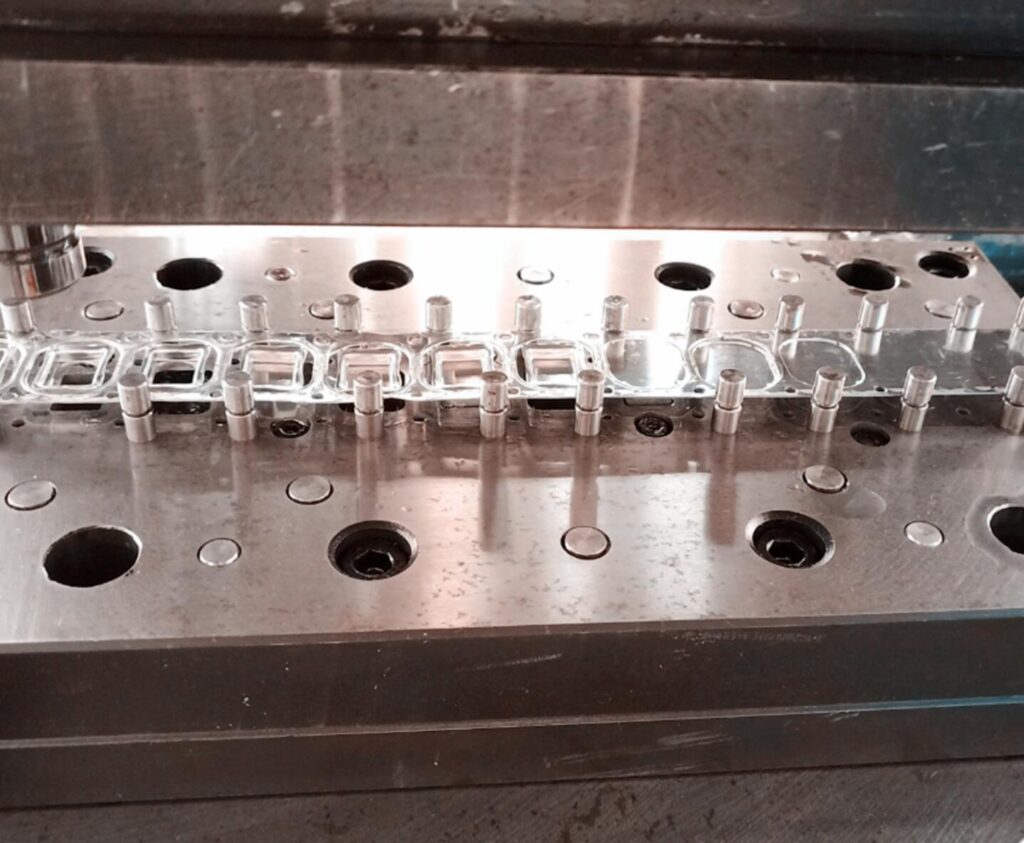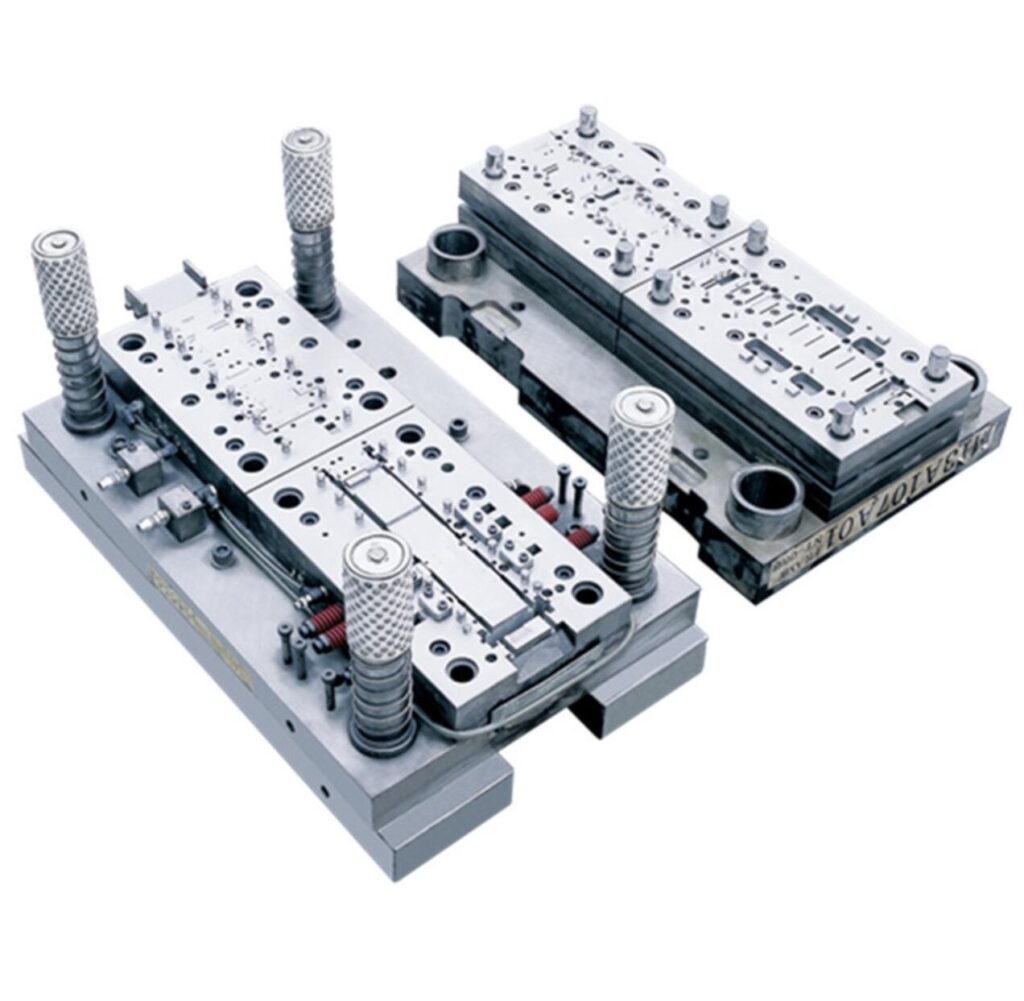In the dynamic world of precision engineering, understanding the nuances of tool and die manufacturing is crucial for anyone in the industry. Today, I’m here to share my insights and experiences to demystify the complexities of this fascinating field.
Tool and die manufacturing is not just a process; it’s an art form where precision meets creativity. This intricate dance of shaping metal involves various techniques and materials, each selected for its unique properties and the project’s specific demands.
Maintaining a balance between technical precision and practical application is critical. Let’s dive deeper into this world, exploring the distinctions and processes that define tool and die manufacturing.

Tool and Die Differences
Tools are generally used in manufacturing to cut, shape, or form materials, whereas dies are specialized tools used in cutting and shaping operations, particularly stamping. Understanding this distinction is crucial in our field, where precision and specificity drive success.
Die Types
Die manufacturing is a vast and intricate field comprising various types of dies, each tailored for specific operations. Let’s explore some of the most common types:
- Blanking Dies – These are used to cut flat shapes from sheet metal, a process essential in creating uniform, precise components.
- Forming Dies – Forming dies is the go-to when bending or shaping metal sheets into specific forms. They are pivotal in the automotive and aerospace industries, where precise curvatures and angles are non-negotiable.
- Progressive Dies – A marvel of engineering efficiency, progressive dies to combine multiple operations like punching, coining, bending, and several others into one continuous cycle. They excel in high-volume production, drastically reducing the time and cost per piece.
- Compound Dies – Ideal for creating complex parts, compound dies perform multiple cuts or shapes in a single stroke. This efficiency is a boon for large-scale production runs.
Materials Used for Die Making
- A2 Grade: A versatile, air-hardening tool steel, A2 is known for its good balance of toughness, wear resistance, and ease of machining. It’s often used in punches, dies, and cutting tools.
- D2 Grade: This high-carbon, high-chromium tool steel is famed for its high wear and abrasion resistance. D2 is a common choice for long-run die applications.
- H13 Grade: H13 is a hot work tool steel with excellent thermal shock and fatigue resistance, making it ideal for die-casting dies and extrusion tooling.
- M2 Grade: A high-speed tool steel, M2 is chosen for its combination of high hardness at high temperatures and excellent wear resistance. It’s commonly used in cutting tools like drills, taps, and reamers.
- O1 Grade: O1 is an oil-hardening tool steel that offers good durability and ease of maintenance, making it a popular choice for small to medium-sized dies and tools.
- S7 Grade: S7 is known for its high impact resistance and toughness. It’s often used for dies and tools that must withstand chipping and breaking, such as chisels and hammers.
- Carbide – Carbide dies are prized for their extreme hardness and resistance to wear, particularly in applications involving high volumes or abrasive materials.
- High-Speed Steel – This material is preferred when the die must withstand high temperatures, as in high-speed operations, without losing its temper.
Die and Mold Differences

In my years at Chengli Hardware, distinguishing between dies and molds has been critical to our precision work. Though they might seem similar at first glance, dies and molds serve distinctly different purposes in manufacturing. Here’s a breakdown of their fundamental differences:
Dies are specialized tools used in manufacturing industries to cut or shape material, mainly using a press. Like molds, they are typically customized to the item they are used to create. Made with dies, they range from simple paper clips to complex pieces used in advanced technology.
Molds, on the other hand, are used in molding primarily for shaping plastic and other materials. The material is introduced into the mold cavity, where it cools or sets to conform to the shape of the cavity. This process is extensively used for making various products, from toys to automotive body parts.
Precision and Complexity
- Dies: Dies are often more complex than molds due to the nature of stamping, which requires high precision. Dies must withstand the high-pressure environment of stamping presses.
- Molds: While also requiring precision, molds are typically subjected to less mechanical stress than dies. However, the complexity can increase depending on the intricacy of the product design.
Materials Used
- Dies: Typically made from hard materials, such as tool steel, to withstand the pressure of stamping machines. Durability is key.
- Molds: Can be made from metals or other materials, depending on the temperature and pressure conditions of the molding process.
Lifespan and Maintenance
- Dies: Requires regular maintenance due to wear and tear from the stamping process. The lifespan of a die can be significantly extended with proper care.
- Molds: Generally have a longer lifespan as they are exposed to less mechanical stress, but maintenance is still crucial for ensuring quality and precision.
Tool and Die Manufacturing Process
Tool and die manufacturing is a meticulous and precise operation involving several vital stages. It begins with the design phase, where detailed blueprints are created, often using CAD (Computer-Aided Design) software. This is followed by the material selection, which is crucial for ensuring the tool’s or die’s durability and efficiency. Next comes the machining phase, where CNC (Computer Numerical Control) machines play a pivotal role in shaping and crafting the tools or dies to exact specifications. Heat treatment and finishing are the final steps, providing the necessary hardness and surface finish.
Common Die Sets
Various die sets are commonly used in tool and die manufacturing, each designed for specific functions. Some of these include:
- Standard Two-Plate Die Sets
- Three-Plate Die Sets
- Solid Die Sets
- Tandem Die Sets
- Progressive Die Sets
- Compound Die Sets
Tool and Die Manufacturing Capabilities
Deep Drawing
Deep drawing is a specialized forming process used to create deep, seamless shapes out of sheet metal. It involves drawing the material into a die by a mechanical punch, producing components like automotive bodies and kitchen sinks. The key here is maintaining material integrity while achieving complex geometries.
Stamping
Stamping, a cornerstone in tool and die manufacturing, involves placing flat sheet metal in either blank or coil form into a stamping press. The metal is formed into a net shape using a tool and die surface. This process is ideal for high-volume production, offering speed, consistency, and cost-efficiency.
Prototypes
Prototype development is crucial for validating design and function before mass production. Rapid prototyping in tool and die manufacturing involves techniques like 3D printing or CNC machining to create accurate and functional prototypes. This accelerates the product development cycle and ensures design accuracy and manufacturability.
Conclusion
Are you looking for a partner who understands the intricacies of precision tool and die manufacturing? Do you need a supplier who can deliver high-quality, custom-tailored solutions for your specific needs? Look no further.
At Chengli Hardware, we’re not just a supplier; we’re your partner in precision. Our state-of-the-art manufacturing capabilities and our unwavering commitment to quality and customer satisfaction make us the ideal choice for all your tool and die manufacturing needs.
